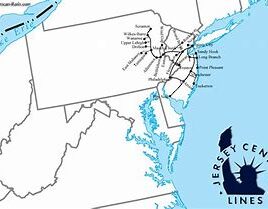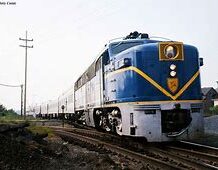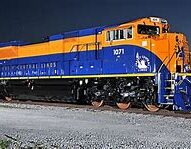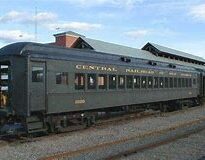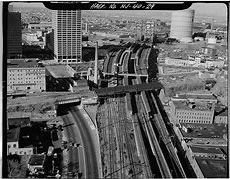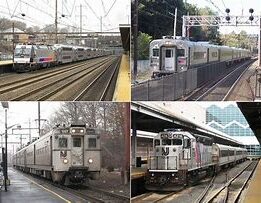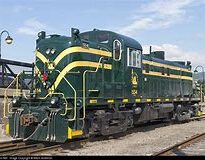 The Central Railroad of New Jersey, also known as the Jersey Central or Jersey Central Lines (reporting mark CNJ), was a Class I railroad with origins in the 1830s.
The Central Railroad of New Jersey, also known as the Jersey Central or Jersey Central Lines (reporting mark CNJ), was a Class I railroad with origins in the 1830s. At its peak, the Central Railroad of New Jersey operated 700 route miles clustered within a dense network that in total boasted some 1,900 track miles.
At its peak, the Central Railroad of New Jersey operated 700 route miles clustered within a dense network that in total boasted some 1,900 track miles. The first commercially successful diesel-electric locomotive, manufactured by Alco in 1924, was built for the Central Railroad of New Jersey.
The first commercially successful diesel-electric locomotive, manufactured by Alco in 1924, was built for the Central Railroad of New Jersey. The Central Railroad of New Jersey has a complicated and complex corporate history comprising numerous predecessors and subsidiaries which later came together to form the classic CNJ system.
The Central Railroad of New Jersey has a complicated and complex corporate history comprising numerous predecessors and subsidiaries which later came together to form the classic CNJ system. In 1929 the CNJ began operating its most famous train, the Blue Comet, from Jersey City to Atlantic City. It ran until 1941.
In 1929 the CNJ began operating its most famous train, the Blue Comet, from Jersey City to Atlantic City. It ran until 1941. It filed for bankruptcy three times; in 1939, 1947 and on March 22, 1967, the CNJ filed for bankruptcy for the final time.
It filed for bankruptcy three times; in 1939, 1947 and on March 22, 1967, the CNJ filed for bankruptcy for the final time. The Central Railroad of New Jersey's main line had a major presence in New Jersey, most of the CNJ's main line is now used by the Raritan Valley Line passenger service and trackage from the CNJ main line in Phillipsburg, New Jersey became part of the Lehigh Line under Conrail; the Lehigh Line is officially the former main line of the Lehigh Valley Railroad.
The Central Railroad of New Jersey's main line had a major presence in New Jersey, most of the CNJ's main line is now used by the Raritan Valley Line passenger service and trackage from the CNJ main line in Phillipsburg, New Jersey became part of the Lehigh Line under Conrail; the Lehigh Line is officially the former main line of the Lehigh Valley Railroad. As red ink continued to flow the CNJ entered its final bankruptcy in 1967.
As red ink continued to flow the CNJ entered its final bankruptcy in 1967.
You are here: Home / Recommended – Items of Interest / “Fallen” Flags / Central Railroad of New Jersey


